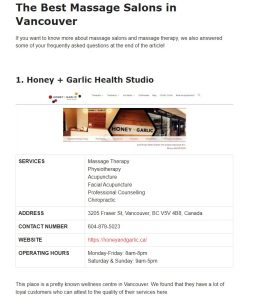
Many people believe that musculoskeletal injuries occur due to poor form, bad posture, or structural faults in the body. However, research suggests that factors such as posture, knee position or other structural variations do not play as significant of a role in causing injury as we previously thought. An informative paper titled “Sit up Straight”: Time to Re-evaluate challenges these common beliefs about posture. Individuals can be pain-free and function at a high level even if they have visible variations from the traditional idea of “normal.” Our bodies are adaptable and wonderfully imperfect, and there is actually a wide range of what can be considered “normal.”
An excellent example of this adaptability is Lamar Gant, who held the world record for deadlifting five times his body weight despite having significant scoliosis for over two decades.

Another misconception is that musculoskeletal injuries occur due to improper lifting techniques. While this factor does play a small role, it is not as significant as commonly believed. Many workplaces implement mandatory “manual material handling training,” teaching workers to lift objects by squatting, keeping their back straight, and using their legs. However, multiple meta-analyses have shown that these trainings do not reduce the rate of back injuries in the workplace.

What about form during strength training? If you’ve ever done a deadlift, you’ve likely been instructed to maintain a straight back. This recommendation is based on studies conducted on non-living tissue (cadavers) that involved repeated bending of the spine (spinal flexion). The results suggested that repeated spinal flexion, particularly under load, could increase the risk of disc injuries in the back. However, human spines are different from animal spines, and just as our muscles grow stronger when we challenge them, research shows our more inert tissues, such as intervertebral discs, also adapt and become stronger. A recent study even demonstrated that a flexed lumbar spine posture during a maximal lift is associated with greater strength and efficiency.
If you want to explore lifting with some bend in your lower back, such as the Jefferson curl, a physiotherapist can guide you on finding a tolerable starting point with less weight and volume than your conventional deadlift. You can gradually increase from there and adapt well.

However, just because spinal flexion appears to be safe and does not necessarily cause back pain, it doesn’t mean that we should completely ignore how we move. The key here is that our bodies are incredibly skilled at adapting to our regular activities. If you regularly deadlift with a straight back, your musculoskeletal system is best prepared to handle the load with that form. This is where the concept of load versus capacity comes into play, which is the more typical cause of musculoskeletal pain and injury.
Understanding Load and Capacity
To put it simply, load refers to the forces or stresses exerted on the musculoskeletal system during movement or physical activity. Capacity, on the other hand, refers to the ability of the musculoskeletal system to handle these loads. It includes the strength and adaptability of muscles, tendons, ligaments, discs, and even bones. It’s important to note that our capacity is influenced not only by our physical strength but also by factors like sleep, mood, stress, and other psychosocial aspects. In fact, research suggests that depression may be a stronger predictor of back pain than tissue damage. Considering these factors is worthwhile when approaching movement, including exercise that you’re already adapted to.


In simpler terms, most pain and injuries occur when we do “too much, too soon.” For example, many novice runners experience musculoskeletal pain or injuries because they often exceed their current capacity by running too far, too frequently, or for too long. This has led to the belief that running is “hard on the knees” or a riskier form of physical activity. However, upon closer examination, it’s more likely that the issue lies in the load being too high compared to their current capacity. The good news is that starting with lower intensity and gradually increasing over time can lead to successful outcomes, regardless of running technique.
Addressing the Discrepancy
The best way to prevent musculoskeletal pain is to allow your tissues enough time to adapt to any changes in load through gradual exposure. This can include adjusting to a new job, hobby, or form of exercise. A physiotherapist can also help you increase your overall strength and fitness, creating a baseline of protection against future episodes of pain and injury by improving capacity and resilience. If you meet the Canadian Physical Activity Guidelines of engaging in 150 minutes of moderate to vigorous physical activity per week, your tissues will become stronger, more resilient, and better equipped to handle changes in load.

If you’re currently experiencing pain and injury, our physiotherapists at Honey + Garlic on Fraser St. can assess any deficits in strength or range of motion and help you identify any discrepancies between load and capacity in your daily life.
We hope you find relief in knowing that anatomical variations in your body do not mean you’re broken or fragile. They simply make you normal! You are no more prone to pain or injury than someone who perfectly matches the textbook picture of a human body (which doesn’t exist). By considering the interplay between load and capacity and seeking support from a physiotherapist if needed, you can maintain a healthy musculoskeletal system.
Experience unparalleled physiotherapy care from Kelvin Tu and Ashley Jestin, our in house physiotherapists. They are both dedicated to providing personalized treatments tailored to your unique needs. Alleviate pain, improve mobility, and enhance your overall well-being by scheduling a physio session at Honey and Garlic today. Visit our modern facility and discover why Honey and Garlic is the go-to choice for physiotherapy in the Fraser St. neighbourhood.



